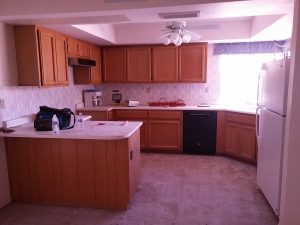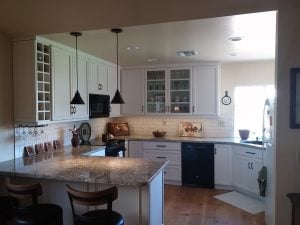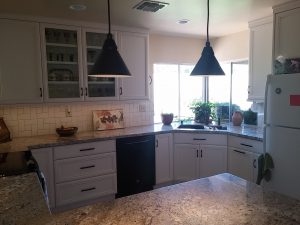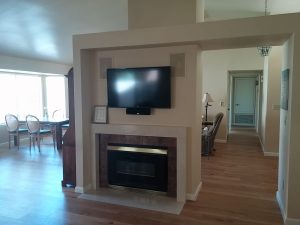


The Market: Sill Strong; Still Balanced
Consistency in Phoenix – Who Would Guess?
Back in February of this year, we reported that our local Phoenix Metro residential real estate market, as a whole, was strong and balanced. Currently, when we remain “in balance,” at least when looking at the Valley as a whole. The story changes a little bit of course when you break down the market by price. $500k and up for example is generally dreary for sellers, where as the $250k and under sellers are swimming in buyers begging for their homes. For a market that was known for radical highs and lows this past decade, our continued consistency is remarkable.
From a Realtor perspective, the market has been strongly balanced for the past 3 years with a few periodic dips and rises, but with consistent annual appreciation. This appreciation has enabled the new home market to strengthen as well giving buyers more choice in homes then we’ve had since the great recession.
The most recent market numbers:
- Active Listings: 20,153 versus 20,024 last year – up 0.6% – and up 5.0% from 19,186 last month
- Pending Listings: 6,065 versus 5,789 last year – up 4.8% – but down 4.2% from 6,331 last month
- Under Contract Listings: 10,013 versus 9,003 last year – up 11.2% – but down 3.0% from 10,318 last month
- Monthly Sales: 7,390 versus 7,003 last year – up 5.5% – but down 7.1% from 7,952 last month
- Monthly Average Sales Price per Sq. Ft.: $141.92 versus $133.44 last year – up 6.4% – and up 2.2% from $138.81 last month
- Monthly Median Sales Price: $230,000 versus $213,000 last year – up 8.0% – and up 1.0% from $227,800 last month
There is much chatter these days about economic changes that will be happening following the election. Some buyers and sellers have put off buying and selling until January. The best change is that as a country we can hopefully move on from the political drama that we’re seeing moment by moment. Wouldn’t it be refreshing to say that our country was strong and balanced rather than weak and divided?
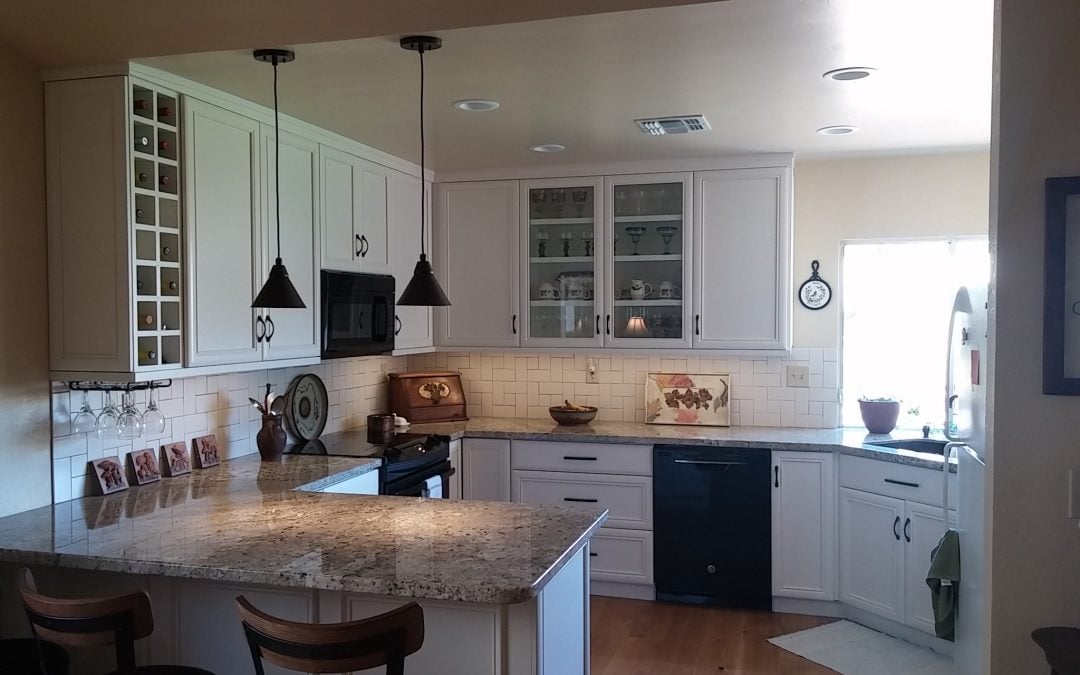
How to Flip a Fixer-Upper into Your Dream Home
Recently clients of ours went searching for their forever home. We saw many potentials over the course of their search and they were really torn between buying a home that was move-in-ready or buying one that needed their TLC.
Ultimately, they chose a home in an area they loved, with great bones, much more elbow room, but that did in fact need their tender loving care. They were kind enough to allow us to take some before and afters (and a few in-betweens) so our readers could see the transformation! (Please excuse the poor quality of my camera phone!)
A few tips for those thinking about doing something similar
Consider Hiring a Designer
While it might seem like an unnecessary cost to some, there are many advantages in hiring a designer for your flip.
For one thing, a designer is going to handle all of the logistics. They have lists of reliable contractors of all types that they will pull together which will set your mind at ease about finding quality and honest workman not to mention the hassle of scheduling.
The truth is that a designer is going to help you see things you couldn’t see yourself, to help give you vision. I would bring the designer in before you even write an offer!
Count the Cost!
You need to know the bottom line. That’s another plug for hiring a designer because they are going to be able to nail down bids from all the different types of contractors left or right in a timely fashion.
Don’t forget to have a good contingency fund between 5-10 grand depending on what the home is worth and what you want to do. I’ve never heard of a flip that didn’t come with a few surprises. If your smart with these steps, you can not only be living in your dream home, but build some instant equity as well!
Count the Emotional Cost too!
The popular flipping shows out there squeeze months of stress into 22 minutes of tv time. While it can be rewarding, fun, and even lucrative, flipping your next purchase adds stress and anxiety to a process that is already stressful as is. Don’t do it unless you understand the toll!
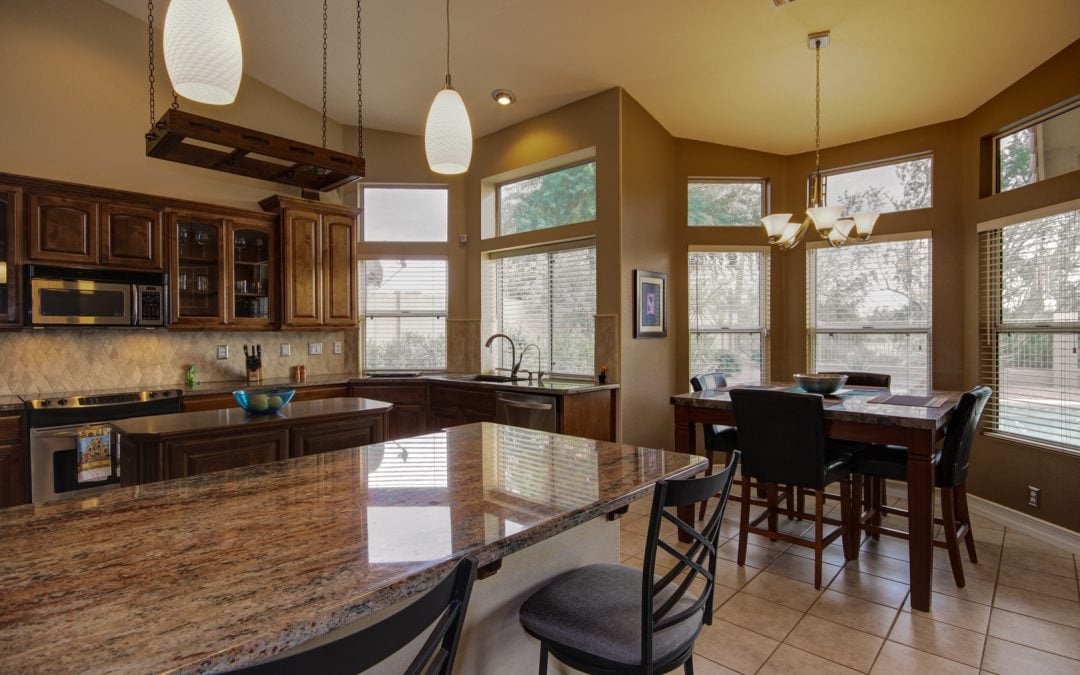
Getting Your Best Price – Staging and Photos are Key!
Two weeks ago I showed a town home in the terrific Bella Vista Town home community at Thunderbird and 94th St in Scottsdale. This lovely gated community has a great central location to the 101, Kierland Commons, Scottsdale Quarter, McCormick Ranch, great schools, recreation and more. My clients really liked Bella Vista, and loved this unit.
What was not to love? It was beautifully staged with the owner’s personal furnishings, was very tastefully upgraded, and showed to perfection. There were only two issues. It was a two story residence – my clients preferred one level, and it backed to 94th Street, a busier road, but not terrible. My clients overlooked both of those issues.
But as it turned out, there was a third, and bigger problem – it sold right away.
Then, a few days later, a new listing came up in the community right after that, so my clients wanted to see it. On paper, this new listing looked like it could be the one – it was a lower level unit, my client’s stated preference, and it didn’t back to 94th St. Plus it was slightly less in price.
We had to wait until Saturday to see the home as the tenants were moving out and it was being cleaned. Though the home was what I call renter-deposit clean, we prefer deep cleanings to get in show-ready condition. If nothing else, we want the buyers to remark, “Boy, this house is clean!” My clients were only in the home for a few minutes before wanting to move on. Though nice, it had zero appeal.
This home would benefit with the use of professional staging. It will cost $3000 – $4000 to stage it, but could well be worth it. This is a community of primarily first and second homeowners, so these potential buyers want to “feel” what it will be like living there. Proper staging of a home can help accomplish that and help get the best price. As part of our marketing presentation we hire a professional staging consultant, at our expense, to go room to room and outside to provide the seller with their professional recommendations. Most of the time, subtraction of some personal items and the rearranging of furnishings is all that is needed for a great look.
Great photography is the final key to getting great buyer exposure. The best home staging can be lost with poor photography. Conversely, poorly staged homes can get a boost with great photography. We don’t leave this to chance. As part of our marketing, we hire (again, at our expense) a professional photographer who knows the right lighting, the best angles, and who will take their time to deliver a great look. With over 90% of buyers viewing prospective homes on the internet, it makes sense (and dollars) to “do it right.”
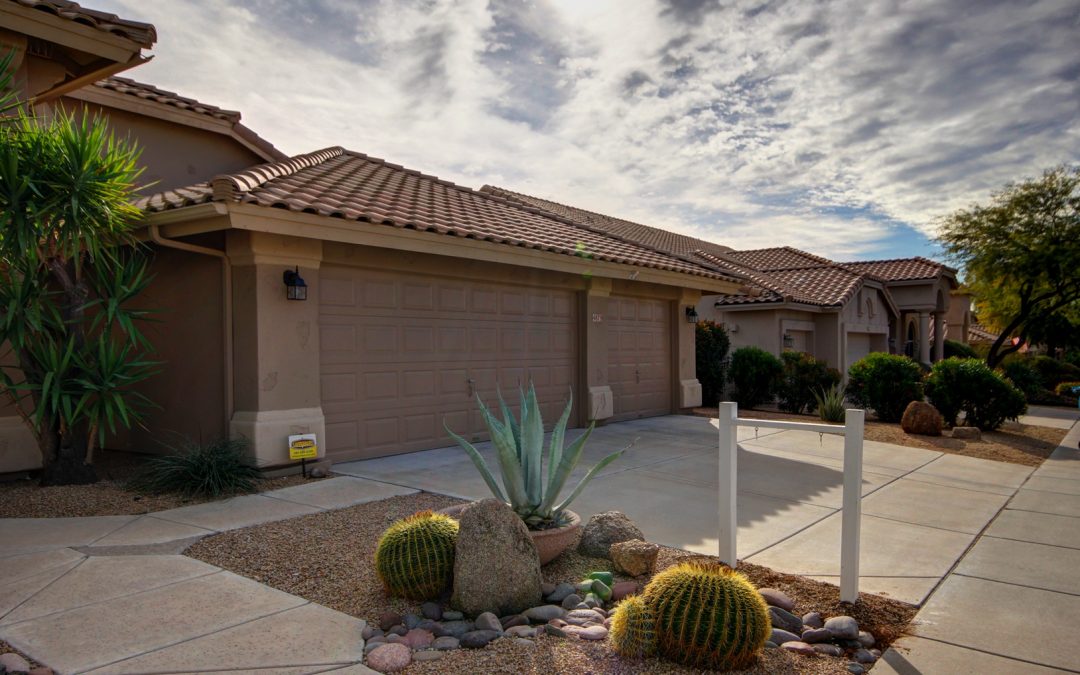
Latest City Price Check
The West Valley Rules the Appreciation Market
The highest priced communities in the Valley are NOT the highest appreciating ones, whereas the highest appreciating communities ARE the lowest priced per square foot.
Paradise Valley is again the most expensive community in the Valley with an average sales price per square foot of $339, which is a 5.5% drop from last year. Carefree ($241 psf) and Scottsdale ($231 psf) take up the #2 and #3 slots.
There were only 2 other communities (Rio Verde and Gold Canyon), besides Paradise Valley, in which prices dropped from a year ago. All others gain in value.
Noticeably, the biggest price gainers are mostly West Valley. Youngtown (18.7%), and Wittman (16.8%) led the way. Eleven cities out of the 41 listed were priced below $100 per square foot.
The primary function of this table is to show the least and most affordable areas in the Phoenix metropolitan area together with longer term pricing trends.
Annual averages are based on a relatively large number of sales. Therefore, they are not as subject to rapid change as monthly averages. The downside is that they do not necessarily represent the current market very accurately, since they include sales from up to a year ago. Pricing may have moved a great deal since then.
We echo our oft repeated caveat: All real estate is local. Check with us about your specific neighborhood and residence when needing to know your value.
(Thanks to Michael Orr and the Cromford Report)
Valley Renters Still Losing Ground
According to Michael Orr of the Cromford Report, the average closed lease rate for all Phoenix Metro areas and home types within the Arizona Regional MLS (ARMLS) is 85.1 cents per sq. ft. per month. This is great news for landlords, but not so much for valley renters. Last year it was 81.0 cents which means an annual increase of 5.1%. Two years ago the number was 75.0 cents and in July 2013 it was 69.6 cents. This shows a rise in rents of 22.3% in the last 3 years! This is dramatically faster than the increase in average wages. Consequently, the typical tenant has a lot less to spend on things other than housing.
This situation is very good for landlords and should create motivation for tenants to become home owners. High rents, however (per Orr), reduce disposable income and so impairs the ability to exercise that motivation to buy. It also reduces the demand for other goods and services. Tenants tend to feel less wealthy than they did 3 years ago unless they have improved their earnings through promotion or job switching. This goes some way to explain why a significant number of people think the economy is doing poorly when almost all the actual numbers are quite positive. Wealth is draining away from tenants but expanding for real estate property owners. With that background it is counter-intuitive that renting has become more popular even for people who can afford to own.
There were 2,998 active rental listings as of Saturday, down from 3,291 on July 23, 2015 and 4,474 on July 23, 2014. In 2008 at this point there were 8,525. Supply appears to be very tight and failing to improve.
Wealth is draining away from tenants but expanding for real estate property owners. With that background it is counter-intuitive that renting has become more popular even for people who can afford to own.
– Michael Orr
Can Institutional Investors Hurt Our Real Estate Market?
Back in 2011-12, Phoenix Metro real estate market values had bottomed out, though no one was a hundred percent sure at the time if it was indeed the bottom. As Realtors working during this difficult and trying time, we were seeing many home buyers, especially first time home buyers, being outbid by buyers who were paying “all cash!” In some cases, we were witnessing at least ten simultaneous offers on a property. Obviously, the word was out – Phoenix was the place to buy!
Some of us were representing individual investors who were buying a number of properties to rent, or fix and flip but all the while, large institutional buyers were buying up homes by the thousands until they pulled back in August 2013. The purpose of their purchases was to create large rental pools. And boy did they. According to data from The Information Market, large institutional investors currently hold 12,629 homes in Maricopa County.
“Phoenix has become a pretty healthy and stable market, much of it the result of these investor’s purchases.”
In retrospect, the large scale investor buy was a really good thing. Neighborhoods that had become blighted from foreclosures and empty houses were starting to be occupied again. Many of these local buyers were fixing and flipping which improved the neighborhoods leading to values increasing and increasing! Phoenix has become a pretty healthy and stable market, much of it the result of these investors’ purchases.
Question: What if these large investors all of a sudden decide to sell? What could happen to values?
Only a small number of the homes purchased by these institutions have sold to date, but that could change. In a recent Bloomberg article, John Bertling, the Chief Executive Officer of Invitation Homes states that “Invitation Homes expects to cull about 5% of its properties annually.” More notably, the article states “about 25% of Invitation Homes’ renters who move out each year are leaving to become buyers,” according to the company. That’s similar to what other large firms are experiencing. Colony Starwood Homes has reported losing about 23% of departing tenants to homeownership and American Homes 4 Rent has said it’s figure is about 30%.
All three of these companies have significant holdings in Maricopa County. Using the 25% figure, 3,163 new home buyers are coming from this rental pool each year. Right now these homes that are vacated by renters-becoming-buyers are swiftly re-rented, and for more money, but when that stops or significantly slows, these companies may alter their strategy.
Right now there doesn’t seem to be any evidence that will start to happen soon. And if it did, the result of that sell-off could be a benefit to the first time home buyer, and wouldn’t that be awesome?!
– Mike Bodeen
*With Thanks to ARMLS Information Market
Market Time Makes a Difference
Alternate Title: The Importance of a Good Pricing Strategy
“We can always come down,” says the confident seller. This is a true statement, but there can sometimes be unintended consequences that can have a serious impact to the overall goal of selling a home for the best price and terms and in a timely manner.
“How long has this been on the market?” asks the interested buyer. In my personal and professional experience, the buyer usually wants to hear one of two responses. Either long or short. If long, the buyer’s thinking; “low-ball offer.” If short, the buyer’s thinking, “I better see this soon!”
What we know for sure:
1) More buyers will see the listing in the first 2-3 weeks of its commencement compared to any other time during the listed period.
2) If there are going to be multiple offers on a home, they usually occur in the first few days of the listing, or the first week after a good price reduction.
3) The longer that a listing is on the market, the greater the distance between the selling price and listed price.
The Phoenix Metro real estate market is currently one of the most well balanced markets in the country, which has not always been the case. In July of 2005, which was the peak of our blistering seller’s market, the average time it took to get a contract on a home was just 24 days. Contrast that with the ugly market downturn in February of 2008, where the average market time for a home to sell shot up to 140 days!
Today, the average market time is 78 days. Bear in mind that the amount of days on the market very much depends on what price range you’re in. If you’re priced under $200,000, your home should sell quickly, depending upon location. If it’s over $500,000, the length of market time increases dramatically. It’s not strange to see the million dollar+ homes sit on the market for a year or more.
For these reasons we always prefer to list the home competitively up front, so take what I’m about to say with a couple grains of salt. If you want to “test the market” with a price that is above what a professional says the home is worth, there may be away you can do so and not get burned. Well, no one can say for sure because it’s a gamble. The method we’ve used to do this, is to list a home with an automatic pre-agreed price reduction that takes place after 3 weeks down to our original recommendation. This way the seller can feel confident he/she isn’t underselling his home, but still get to a competitive price point while interest is still relatively high.
In the technologically advanced age we live in, the world of interested home buyers will see your home online before they ever decide whether or not to go see it in person. If not, they will either file it in the trash never to see it again, or perhaps save it to keep an eye on it. If the home is reduced they will then take note of it again, that is, if they haven’t already decided on different home. The best course of action for the seller is to get the home under contract during the first 3-4 weeks. In this situation the seller will most likely not be “low-balled” and still be able to obtain the best possible price.
Over the years we have seen too many sellers waste time and money because they fail to price their home correctly in the beginning, and worse than that, not reduce the price in time to still capture that initial wave of market interest. This is especially important in our current $500k+ market range where demand is low and supply is high.

The Things Realtors See – A Home for the Birds!
In over 40 years of selling residential real estate, I think that I’ve pretty much seen it all. And then, a new listing comes up where I realize, I was dead wrong. This happened to me just this last Friday. I’ll just call this listing, “the Bird House.”
But first a shameless plug for a terrific listing I have near “the bird house,” as these clients of mine were the ones who asked me about the bird house. My listing (1902 E. Tamar – See pics below) is on 4.38 gorgeous elevated acres in North Phoenix. It can be split into additional parcels or just kept as a private preserve area. Terrific views. The house is one of the best built homes I’ve seen and includes 14″ thick walls with an open great-room floor-plan. Very energy efficient. Click on the picture below to get more info.

Anyway, back to “the bird house.” The listing, by a fellow HomeSmart professional, states in the remarks section of the listing, “NO ACCESS TO INSIDE OF HOUSE!!! DO NOT ENTER HOUSE!!” Further instructions say to Realtors, “DO NOT SEND CLIENTS BY THEMSELVES AND DO NOT GO IN HOUSE PLEASE!!! ACCESS AT YOUR OWN RISK.” Now, being a member of the human race, that screams out to me, “Come on in!” So Jonathan and I drove out to the home near the Desert Hills community. The gate is padlocked, but we get in via Realtor access. Walking up to the home, which was built in 1988, there were dozens of bird cages sitting outside the home. Tremendous physical damage is evident everywhere we looked.

“DO NOT SEND CLIENTS BY THEMSELVES AND DO NOT GO IN HOUSE PLEASE!!! ACCESS AT YOUR OWN RISK.”

Then we hear cooing birds as we walk in the open front door. And there’s seemingly tons of pigeon poop plopped everywhere and filth on steroids. To say it was gross would be 2016’s understatement of the year.
There is a very long barn-like structure in the back that we did not dare venture in. Dozens of stalls, the size of horse stalls were screened in, no doubt housing more birds, perhaps exotic ones. More gross.

There’s much more to the visual and aromatic. We’ve taken a few pics for you. Oh yea, the house was appraised and sold in a day for $335,000 cash. It also sits on nearly 5 acres. The appraisal estimated $45,000 for demolition of all structures
And someone lived here.
Anyone want to see my Tamar listing?

Is Scottsdale Going to the Dogs?
A recent article from Realtor.com, our national trade organization, revealed that Americans love their pets, and especially their dogs, and even more so their dogs in Scottsdale, Arizona. Scottsdale was named one of the top ten (4th place) cities in the country for dog ownership.http://www.realtor.com/news/trends/top-10-cities-for-dog-lovers/
More and more clients these days are asking where the nearest dog park is in the community they’re considering buying into. The neighborhood where I live seems to annually request the HOA to provide a dog park even though there are miles upon miles of already existing grass and walking paths.
According to www.HumaneSociety.org, a 2015-2016 survey reported:
- There are 78,000,000 dogs in the U.S.
- 44% of all homes have at least one dog
- 50% of all pet owners own small dogs
- 66.7% of dog owners consider their dogs to be family members
- $1436 is the average amount spent on veterinary care per year
- 69% of Scottsdale homes have at least one dog
Referring to Scottsdale, the article shared this about the city as it relates to dogs:
- This wealthy suburb of Phoenix has no shortage of retirees who can spend all day with Fido alfresco. The city boasts a long list of restaurants and cafes with extensive outdoor dining for you and your furball, along with 20 bars where dogs can sit alongside your bar stool. (Don’t knock it if you haven’t tried it.)
- There’s also an abundance of pet shops that cater to petite dogs. Check out miniature frilly dresses and collars at Mackie’s Parlour, or Louis Vuitton knockoff dog toys, plush sports car-shaped dog beds, and rhinestone collars at
Oh My Dog. But please don’t go overboard-dogs embarrass easily.
Buyer beware about this! Some communities limit the number and/or size of dogs. That information is found in the CC&R’s (neighborhood rules) and is an important read even if you don’t own pets. Some clients of ours who have three dogs recently sold their home in McCormick Ranch, and purchased a home a little further north in a community that limited the number of pets to two. Our clients spoke in person with the President of the HOA about their three, and they were given approval. That’s good, because that rule could have been the proverbial deal killer.

